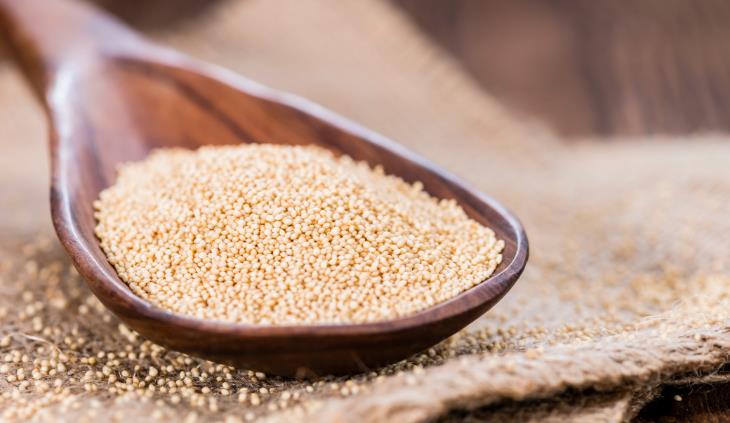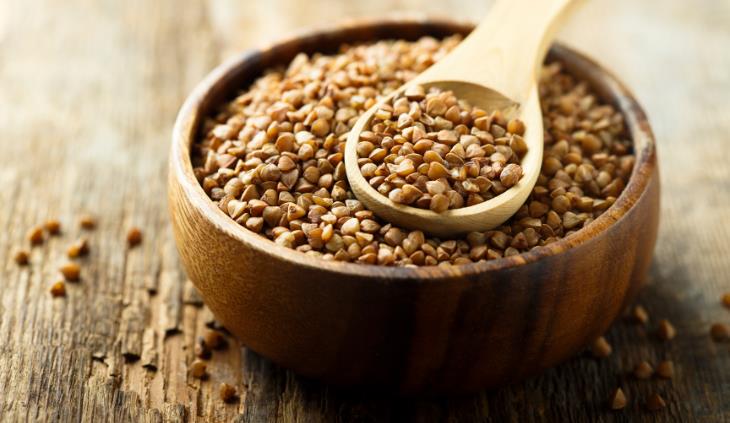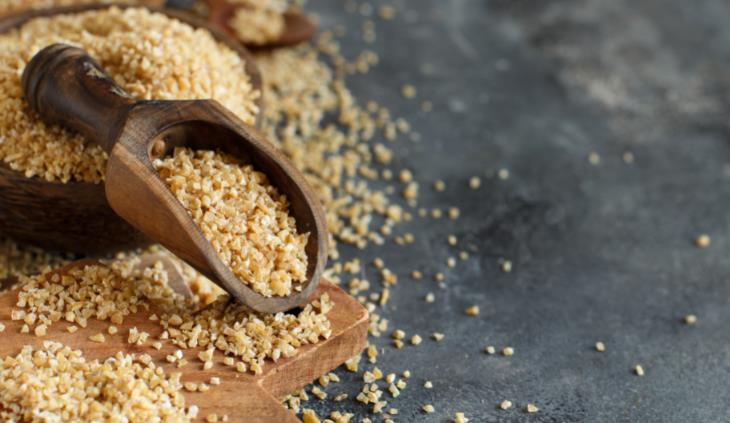
There’s nothing quite as refreshing as a chilly salad to kickstart the day during the warm seasons. But as the temperatures plummet, we naturally crave something warmer to wake the digestive system after the night's fast. But then again, how much oatmeal, toast, and eggs can you have? Even a grilled cheese sandwich becomes tedious when you have it for breakfast day in and day out.
It’s no secret that one of the hardest things about cooking is deciding what to cook. We’re here to introduce you to five different grains you can enjoy warm on a chilly morning.

A tiny form of millet, this little ancient seed originated in Africa, where it is highly revered as a source of sustainable nutrition fit even for royalty. It is a gluten-free whole grain containing fiber, iron, zinc, B vitamins, and sulfur-containing amino acids. It is great for cardiovascular health. Its high content of magnesium supports sleep quality and a healthy gut microbiome, and as it is a complex carbohydrate, it helps stabilize blood glucose levels, making it a perfect choice for diabetics. You can find fonio at health stores or online.
Basic fonio recipe, 1 serving:
Coat 1/2 cup of fonio in 1 tablespoon of olive oil/coconut oil.
Add into a small saucepan with one cup of water and some salt and bring to a boil. Immediately reduce the heat to a minimum and cover. Cook for one more minute, and then remove from heat and let stand for another four minutes. Fluff with a fork.
Click here for a Fonio Smoothie Bowl recipe with coconut cream and fruits.

Also considered one of the oldest grains in the world, this gluten-free seed is considered easy to grow and is native to Asia and Africa. It is a great source of niacin, which is important for enzyme function throughout the body, as well as beta-carotene, which supports eye health. Millet helps manage blood sugar thanks to its low glycemic index, it supports a healthy gut microbiome thanks to its high fiber content, and it helps manage and balance cholesterol in the body. It is considered an alkaline food (illnesses-causing bacteria thrive in acidic environments) and is rich in iron, calcium, magnesium, B vitamins, and protein.
Basic millet recipe, 1 serving:
Wash the millet 3 times. Boil 1/2 cup millet in 1 1/2 cups water and some salt. Let boil for one minute, and then reduce heat to a minimum, cover, and let simmer for 15 minutes. Remove from heat and let sit for another 10 minutes.
You can also soak the millet in water overnight. In that case, the recipe is the same, but the cooking time is only 10 minutes.
You can also puff millet in a dry skillet and sprinkle it over salads.
We recommend enjoying it with some chopped onion and garlic fried in olive oil. Cook it in vegetable broth and add a dollop of tomato sauce for a savory millet bowl. Like couscous, it will soak up any flavor you add.

Amaranth, another heirloom gluten-free cereal grain, comes from the same family as quinoa. If you look at it closely, you’ll be able to see that it has a small white tail like quinoa.
It is considered to be a whole protein (meaning, it contains all the amino acids) with anti-cancer and anti-inflammatory properties. It is a good source of fiber, rich in iron, selenium, vitamin B6, magnesium, phosphorus, manganese, and vitamin C. Amaranth helps lower cholesterol and reduce inflammation in the body.
Basic amaranth recipe, 1 serving:
Boil 1 cup of salted water. Add 1/2 cup of amaranth and boil again. Reduce flame to low-medium, cover, and cook for 15 to 20 minutes.
For a breakfast bowl, add honey, nuts, and your milk of choice. You can also pop amaranth in a dry skillet to make puffs. These will be a great addition to any salad, cookie, or soup recipe.

Despite the similarity in the name, buckwheat is not related to wheat. Thus, it is gluten-free. It can be found both in its raw form and in a toasted form, sometimes referred to as kasha. However, in the US, it is most commonly found in flour form.
Buckwheat is a top source of protein and fiber. It is a complex carbohydrate, which helps with satiety and weight management. It contains B vitamins and vitamin K, aids digestion, and supports heart health.
Basic Raw buckwheat recipe, 1 serving:
In a saucepan, combine 1/2 cup of raw buckwheat with 1 cup of water and some salt. Bring to a boil, reduce to a simmer, cover, and cook for 15 to 20 minutes. If needed, drain but do not rinse.
Basic roasted buckwheat recipe, 1 serving:
In a saucepan, combine 1/2 cup of buckwheat with 1 1/2 cups of water and some salt. Bring to a boil, reduce to a simmer, cover and cook for 20 minutes.
Roasted buckwheat is a more fitting choice for breakfasts and porridge.
Basic buckwheat flour flatbread recipe:
If you only have access to buckwheat flour, you can mix a small portion of the flour with water, salt, and another seasoning of your choice. Add the water little by little until you have a runny but stable consistency. Heat olive oil in a pan and cook until ready. This flatbread is hard to burn; you can make it either soft or crispy around the edges.

Bulgur is a form of processed wheat, making it the only grain on our list containing gluten. Still, you should consider adding it to your diet for the following reasons. It is a good source of fiber and is rich in iron, folate, vitamin B6, in niacin, manganese, and magnesium. It increases metabolism and helps manage blood sugar. It is good for heart health and weight and blood sugar management.
Basic bulgur recipe, 1 serving:
Boil one cup of salted water. Add half a cup of the bulgur and cook, stirring occasionally, for six minutes. If the water isn’t fully soaked, let stand until it is and serve.
We would recommend adding some fried, cooked, or steamed vegetables on top of the bulgur base. Top everything with flaxseed oil for extra omega-3 fats and serve.